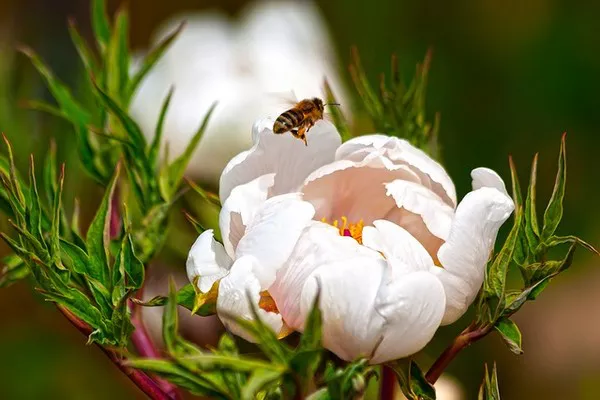Hummingbirds, with their iridescent plumage and darting flight, are among the most captivating creatures in the avian world. For many gardeners and nature enthusiasts, creating a welcoming environment for these tiny marvels is a rewarding endeavor. One of the most effective ways to attract hummingbirds to your garden is by planting flowers that provide them with nectar, their primary food source. In this comprehensive guide, we will explore the best flowers for hummingbirds, considering factors such as bloom time, color, nectar production, and geographical region.
Understanding Hummingbird Flower Preferences
Before delving into specific flower recommendations, it’s essential to understand the characteristics that make a flower attractive to hummingbirds. Hummingbirds are attracted to flowers primarily based on their nectar content and flower shape. They have a strong preference for tubular or funnel-shaped flowers that allow them to access nectar with their specialized long, slender bills. Additionally, they are drawn to brightly colored blooms, particularly shades of red, orange, and pink, which stand out against the green foliage and are easily visible to their keen eyesight.
Factors to Consider When Choosing Hummingbird Flowers
When selecting flowers to attract hummingbirds, several factors should be taken into account to ensure a diverse and continuous food supply throughout the hummingbird season:
1. Bloom Time: Choose a variety of flowers that bloom at different times throughout the hummingbird season to provide a continuous nectar source from spring through fall.
2. Color: Opt for flowers in shades of red, orange, and pink, as these colors are most attractive to hummingbirds. However, flowers in other colors, such as purple and blue, can also be appealing.
3. Nectar Production: Select flowers with high nectar production to ensure an abundant food supply for visiting hummingbirds.
4. Geographical Region: Consider the climate and growing conditions of your region when choosing hummingbird flowers to ensure they will thrive in your garden.
Now, let’s explore some of the best flowers for attracting hummingbirds, categorized by their bloom time and geographical suitability.
Spring-Blooming Flowers
1. Trumpet Vine (Campsis radicans): With its vibrant orange-red trumpet-shaped flowers, trumpet vine is a favorite of hummingbirds in the spring. It is a vigorous climber that can quickly cover trellises, fences, and arbors, providing ample nectar for hungry hummingbirds.
2. Salvia (Salvia spp.): Several species of salvia, including scarlet sage (Salvia coccinea) and pineapple sage (Salvia elegans), bloom profusely in the spring and are irresistible to hummingbirds. Their tubular flowers come in shades of red, pink, and purple, providing a diverse nectar source.
3. Bee Balm (Monarda spp.): Bee balm, also known as bergamot or Oswego tea, produces clusters of tubular flowers in shades of red, pink, and purple. It blooms in late spring to early summer and attracts not only hummingbirds but also bees and butterflies.
Summer-Blooming Flowers
1. Red Hot Poker (Kniphofia uvaria): The tall spikes of red hot poker flowers add vertical interest to the garden and are a magnet for hummingbirds in the summer. Their torch-like blooms come in fiery shades of red, orange, and yellow.
2. Fuchsia (Fuchsia spp.): Fuchsia flowers, with their delicate, pendulous blooms, are a favorite of hummingbirds throughout the summer months. They come in a variety of colors, including shades of pink, purple, and red, and can be grown in hanging baskets or containers.
3. Penstemon (Penstemon spp.): Penstemons, also known as beardtongues, are drought-tolerant perennials that produce tubular flowers in shades of red, pink, purple, and white. They bloom from late spring through summer and are highly attractive to hummingbirds.
Fall-Blooming Flowers
1. Helenium (Helenium spp.): Helenium, commonly known as sneezeweed, produces daisy-like flowers in shades of yellow, orange, and red in the fall. Their late-season blooms provide a valuable nectar source for hummingbirds as they prepare for migration.
2. Crocosmia (Crocosmia spp.): Crocosmia, also known as montbretia, produces arching stems of tubular flowers in shades of red, orange, and yellow in late summer to early fall. Their graceful form and vibrant blooms make them a favorite of hummingbirds.
3. Agastache (Agastache spp.): Agastache, or hyssop, is a genus of aromatic perennials that produce spikes of tubular flowers in shades of pink, purple, and orange in the fall. They are drought-tolerant and attract hummingbirds, bees, and butterflies.
Regional Recommendations
While many of the aforementioned flowers are suitable for a wide range of climates, it’s essential to consider the specific growing conditions of your region when selecting hummingbird flowers. Here are some additional recommendations based on geographical regions:
1. Pacific Northwest: Red-flowering Currant (Ribes sanguineum): Native to the Pacific Northwest, red-flowering currant produces clusters of pink to deep red flowers in early spring, attracting hummingbirds and other pollinators.
Southeastern United States:
2. Coral Honeysuckle (Lonicera sempervirens): Coral honeysuckle is a native vine with tubular, coral-colored flowers that bloom from spring to summer. It is a favorite of hummingbirds in the Southeast.
Southwest Desert Region:
3. Desert Honeysuckle (Anisacanthus spp.): Desert honeysuckle, also known as flame acanthus, produces tubular flowers in shades of orange and red, attracting hummingbirds to desert gardens.
Conclusion
Creating a garden that attracts hummingbirds is a delightful way to connect with nature and enjoy the beauty of these enchanting creatures up close. By selecting a diverse array of flowers that bloom throughout the hummingbird season and considering factors such as bloom time, color, nectar production, and geographical suitability, you can create a haven that will entice hummingbirds to visit your garden year after year. Whether you have a small balcony garden or an expansive backyard oasis, there are hummingbird flowers suited to every space and climate. So roll up your sleeves, dig in the dirt, and get ready to welcome these tiny wonders into your garden.


